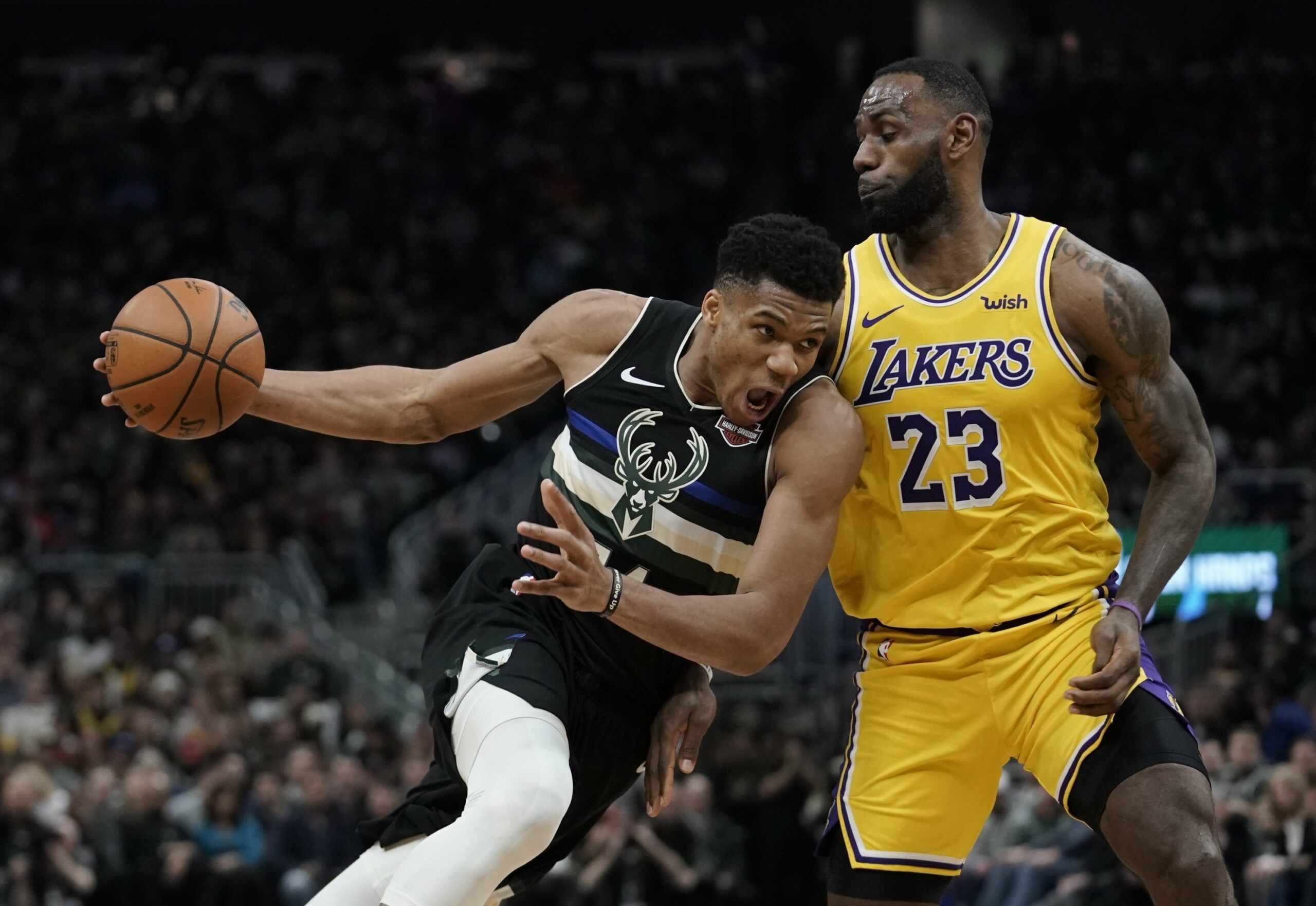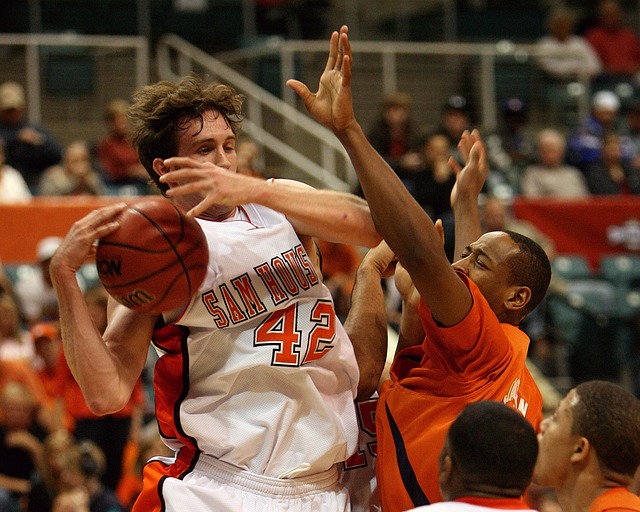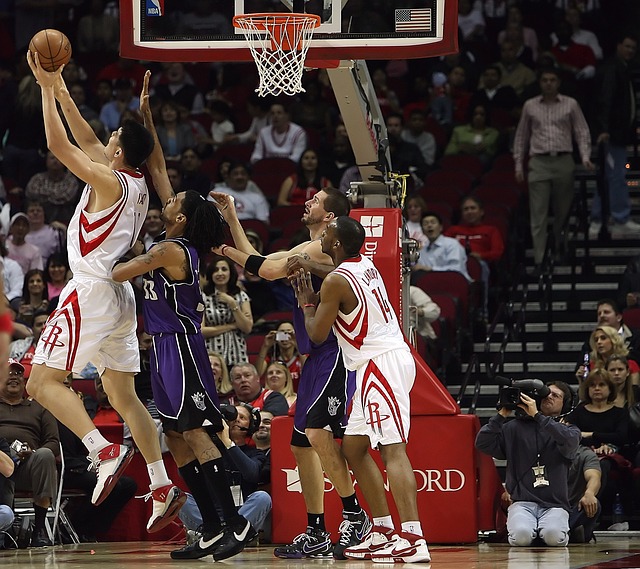Why do basketball players wear rubber bands on their knees?
Basketball is a physically demanding sport requiring much running, jumping, and quick movements. As a result, basketball players are prone to various injuries, particularly in their knees. Basketball players have used various knee support devices to prevent these injuries and improve performance for many years. One such device is a rubber band, often seen wrapped around a player’s knee. But what is the purpose of these rubber bands, and how do they help basketball players on the court? In this blog post, we will explore the use of rubber bands in basketball, the benefits they provide, and how they compare to other knee support devices. We will also discuss the importance of knee health in basketball and how these support devices can help players stay healthy and perform at their best.

Explanation of how knee braces and rubber bands can help prevent injuries
Knee braces and rubber bands are two support devices commonly used by basketball players to help prevent injuries. Knee braces are typically made of neoprene or other materials and can be worn on either one or both knees. They work by providing compression and support to the knee joint, helping to reduce stress on the ligaments and tendons. This can be particularly beneficial for players with a history of knee injuries or recovering from a knee injury. Knee braces can also help stabilize the knee during sudden changes in direction, preventing hyperextension or twisting of the joint.
On the other hand, rubber bands are typically used differently. Instead of providing direct support to the knee joint, they are used to provide resistance during exercises or drills. When wrapped around the knee, rubber bands create tension, which can help strengthen the muscles around the knee joint. This increased strength can help reduce the risk of knee injuries by improving stability and reducing the strain on the ligaments and tendons.
Benefits Of Knee Brace and Rubber Bands
In addition to the direct benefits of knee braces and rubber bands, there are other ways in which they can help prevent injuries. By providing support and resistance, these devices can help improve players’ overall form and technique. This can reduce the risk of injuries caused by improper movement patterns or overuse. Additionally, by reducing the risk of knee injuries, players are less likely to compensate for knee pain or weakness by altering their movement patterns in ways that can lead to other injuries, such as ankle sprains or back pain.
Overall, knee braces and rubber bands are two effective ways basketball players can help prevent knee injuries. While they work in different ways, both devices can help improve stability, reduce stress on the knee joint, and improve overall form and technique. Using these support devices, players can stay healthy, perform at their best, and stay on the court longer.
Types of knee braces and rubber bands used in basketball
Basketball players commonly use several types of knee braces and rubber bands to support their knees and prevent injuries.
- Knee sleeves: Knee sleeves are made of neoprene and are designed to provide compression to the knee joint. They are lightweight and comfortable to wear, making them a popular choice for basketball players who want to provide some support without restricting movement.
- Hinged knee braces: Hinged knee braces are a more structured type of knee brace that includes hinges on either side of the knee joint. These hinges allow some movement while providing support and stability to the knee. Hinged knee braces are often used by players recovering from a knee injury or those with chronic knee pain.
- Patellar tendon straps: Patellar tendon straps are small straps that wrap around the knee just below the patella (kneecap). They are designed to provide support and compression to the patellar tendon, which can help reduce pain and inflammation caused by conditions like patellar tendonitis.
- Resistance bands: Resistance bands are rubber bands that can provide resistance during exercises and drills. Resistance bands create tension when wrapped around the knee, which can help strengthen the muscles around the knee joint.
- Power bands: Power bands are thicker and stronger than resistance bands and are typically used for more advanced strength training exercises. They can also be wrapped around the knee to provide resistance and improve muscle strength.
The type of knee support device best for a basketball player will depend on their needs and the type of injury or pain they are experiencing. It is essential to consult with a medical professional before using any knee support device to ensure proper use and avoid exacerbating an existing injury.
The function of rubber bands on basketball players’ knees
Rubber bands are often seen wrapped around basketball players’ knees, and they serve a specific purpose in helping to prevent knee injuries and improve performance on the court. These rubber bands, also known as resistance bands, are typically used during warm-up exercises and drills to provide resistance and increase muscle strength around the knee joint.
How to help Rubber Bands on basketball players’ knees
When wrapped around the knee, resistance bands create tension, which engages the muscles around the knee joint. This engagement helps to improve stability and reduce the risk of knee injuries by strengthening the muscles that support the knee. Stronger muscles around the knee joint can also help improve overall performance, allowing players to jump higher and move more quickly on the court.
In addition to providing strength and stability, resistance bands can also help improve flexibility and range of motion in the knee joint. This increased flexibility can help reduce the risk of knee injuries caused by sudden movements or changes in direction.
Support To Relieve pain
It is important to note that resistance bands are just one part of a comprehensive knee injury prevention and treatment plan. They are most effective when used with other support devices, such as knee braces or patellar tendon straps, and when combined with proper warm-up and stretching techniques.
The function of rubber bands on basketball players’ knees provide resistance and increase muscle strength, stability, and flexibility around the knee joint. By using resistance bands as part of their training and warm-up routine, basketball players can help reduce the risk of knee injuries and improve their performance on the court.
Precautions and safety measures when using rubber bands
Rubber bands are a common household item used for various purposes, from tying items to playing games. However, you should follow some precautions and safety measures when using rubber bands to prevent accidents and injuries. Here are some tips to keep in mind:
- Use the right size and strength of rubber bands for the task: Rubber bands come in different sizes and strengths, so choosing the right one is essential. Using a weak rubber band for a heavy-duty task can cause it to snap, while using a solid rubber band for a delicate task can cause unnecessary tension and may lead to accidents.
- Store rubber bands safely: When not in use, store rubber bands in a container or drawer away from direct sunlight and heat. Exposure to sunlight and heat can cause rubber bands to dry out and become brittle, leading to breakage.
- Please handle with care: When handling rubber bands, avoid pulling or stretching them too much, as this can weaken them and make them more prone to breaking. Also, be careful when releasing a stretched rubber band, as it can snap back and hit you or someone else.
- Please keep away from children and pets: Rubber bands can be a choking hazard for children and pets, so keep them out of reach when not in use.
- Wear eye protection: When using rubber bands for tasks such as tying objects together, wear eye protection to prevent eye injuries from snapping rubber bands.
- Do not use damaged or worn rubber bands: Check rubber bands for signs of damage or wear before use. If a rubber band is damaged or worn, do not use it, as it may break unexpectedly and cause injury.
Following these precautions and safety measures, you can use rubber bands safely and avoid accidents and injuries.
Does the rubber band hurt?
Rubber bands can cause pain and discomfort if misused. Rubber bands should not hurt when used as intended, but if they are used carelessly, they can cause harm.
The level of pain caused by rubber bands can vary depending on the rubber band’s size, strength, and purpose. For example, a small rubber band used to secure a ponytail may not cause discomfort, while a larger rubber band used to tie a stack of papers may cause discomfort if pulled too tightly.
Common Source For Pain
One of the most common sources of pain from rubber bands is when they snap against the skin. This can happen when the rubber band is stretched too far or released too quickly, causing it to snap back and hit the skin. This can result in sharp pain and, in some cases, may cause bruising or even break the skin.
Another potential source of pain from rubber bands is when they are worn for extended periods, such as braces or compression bands. If these bands are too tight, they can cause discomfort, pain, or even injury if left on for too long.
Generally, when using rubber bands, it’s essential to use them as intended and handle them carefully. Avoid stretching them too far, releasing them too quickly, or wearing them for extended periods. If you experience pain or discomfort from a rubber band, remove it immediately and seek medical attention if necessary.
How long do rubber bands stay on?
The length of time that rubber bands stay on depends on several factors, such as the size, strength, and purpose of the rubber band and the conditions in which it is being used.
For example, a small rubber band used to secure a ponytail may only stay on for a few hours before it needs to be replaced, while a larger rubber band used to tie together a stack of papers may stay on for several days or even weeks.
Using durability
When used in orthodontics, rubber bands that apply pressure to teeth can stay on for anywhere from a few days to several weeks, depending on the treatment plan and the patient’s needs.
Generally, when using rubber bands, following the manufacturer’s instructions and replacing them as necessary is essential. If the rubber band begins to lose its elasticity, becomes damaged or stretched out, or starts to cause discomfort, it should be replaced immediately.
It’s also essential to store rubber bands in a cool, dry place, away from direct sunlight or heat, as exposure to these elements can cause them to dry out and lose their elasticity more quickly.
Do rubber bands help Anxiety?
Rubber bands are sometimes used to manage anxiety, particularly in the context of cognitive-behavioral therapy (CBT). The idea behind using rubber bands for anxiety is that the sensation of snapping or pulling the band can help individuals redirect their attention away from anxious thoughts and feelings.
Experiences Anxiety
When a person experiences anxiety, they may feel overwhelmed and unable to focus on anything other than their anxious thoughts. By snapping a rubber band, the sudden pain or pressure can be a physical reminder to shift focus away from the anxiety and back to the present moment.
However, it’s important to note that using rubber bands as an anxiety management tool should be done under the guidance of a mental health professional. They can help determine if this technique is appropriate for an individual’s needs and provide guidance on using it effectively and safely.
Furthermore, snapping a rubber band may temporarily relieve anxiety symptoms, but it is not a long-term solution. CBT techniques such as exposure therapy, cognitive restructuring, and relaxation exercises may be more effective in managing anxiety in the long run.
FAQs
Why do basketball players wear rubber bands on their knees?
Basketball players wear rubber bands on their knees to provide extra support and stability to the knee joint during the game’s physical demands.
Do rubber bands on the knees prevent injuries in basketball players?
While wearing rubber bands on the knees can provide extra support and stability, they are not a foolproof way to prevent injuries. Basketball players should also engage in proper stretching and warm-up exercises and use proper techniques during gameplay to prevent injuries.
Can rubber bands on the knees improve a basketball player’s performance?
While rubber bands on the knees may not directly improve a player’s performance, they can help prevent injuries that may otherwise hinder their performance on the court.
How do basketball players wear rubber bands on their knees?
Basketball players typically wear rubber bands just above or below the knee joint, securing them in place with a wrap or compression sleeve.
Are any risks associated with wearing rubber bands on the knees during basketball gameplay?
Wearing rubber bands on the knees can provide extra support and stability, but they should be used cautiously. If the rubber bands are too tight, they can restrict blood flow and cause discomfort or injury. Additionally, players should ensure that the rubber bands do not interfere with their range of motion or flexibility.



